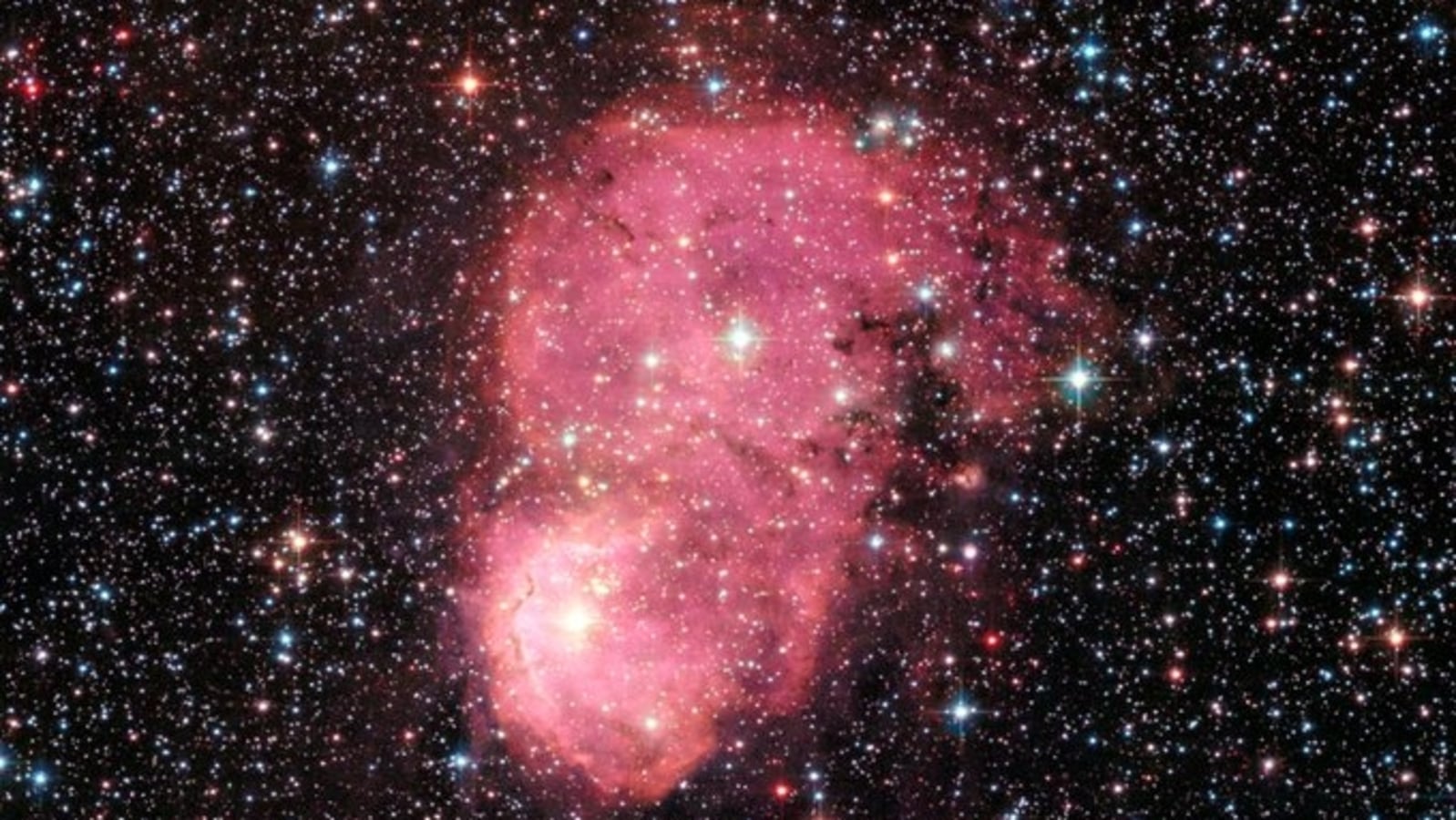Hubble Space Telescope shows 2 nebulae appearing as one! Check details here
Hubble Space Telescope captured two festive-looking nebulas, situated so as to appear as one. Know why they glow red here.

NASA's Hubble Space Telescope has captured an image showing two nebulae appearing as one. Both the nebulae are collectively called NGC 248 and reside in the Small Magellanic Cloud. It can be known that the Small Magellanic Cloud is a dwarf galaxy that is a satellite of our Milky Way galaxy. In the image you can see both the nebulae glowing red. This is because the intense radiation from the brilliant central stars is heating hydrogen in each of the nebulas.
"There are actually two nebulae in this #HubbleClassic view! Appearing as one, they're collectively called NGC 248. They reside in the Small Magellanic Cloud – a satellite galaxy to our Milky Way. NGC 248 is ~60 light-years long and 20 light-years wide, Hubble tweeted.
There are actually two nebulae in this #HubbleClassic view!
— Hubble (@NASAHubble) August 8, 2022
Appearing as one, they're collectively called NGC 248. They reside in the Small Magellanic Cloud – a satellite galaxy to our Milky Way.
NGC 248 is ~60 light-years long and 20 light-years wide: https://t.co/5mdFi6Pzh6 pic.twitter.com/wUVN5wAABp
Sharing some details about the NGC 248m Hubble in a report said that the nebulae were discovered in 1834 by the astronomer John Herschel. It is among a number of glowing hydrogen nebulas in the dwarf satellite galaxy, which is located approximately 200,000 light-years away in the southern constellation Tucana.
Also Read: Scary! A GIANT 100-feet wide asteroid will approach the Earth tomorrow, reveals NASA
The image is part of a study called Small Magellanic Cloud Investigation of Dust and Gas Evolution (SMIDGE). Astronomers are using Hubble to probe the Milky Way satellite to understand how dust is different in galaxies that have a far lower supply of heavy elements needed to create dust.
"The Small Magellanic Cloud has between a fifth and a tenth of the amount of heavy elements that the Milky Way does. Because it is so close, astronomers can study its dust in great detail, and learn about what dust was like earlier in the history of the universe," the report said.
Also Read: Beware! A house-sized asteroid is hurtling towards the Earth today, says NASA
"It is important for understanding the history of our own galaxy, too," explained the study's principal investigator, Dr. Karin Sandstrom of the University of California, San Diego. Most of the star formation happened earlier in the universe, at a time where there was a much lower percentage of heavy elements than there is now. "Dust is a really critical part of how a galaxy works, how it forms stars," said Sandstrom.
It can be known that the data used in this image were taken with Hubble's Advanced Camera for Surveys in September 2015.
Catch all the Latest Tech News, Mobile News, Laptop News, Gaming news, Wearables News , How To News, also keep up with us on Whatsapp channel,Twitter, Facebook, Google News, and Instagram. For our latest videos, subscribe to our YouTube channel.





























